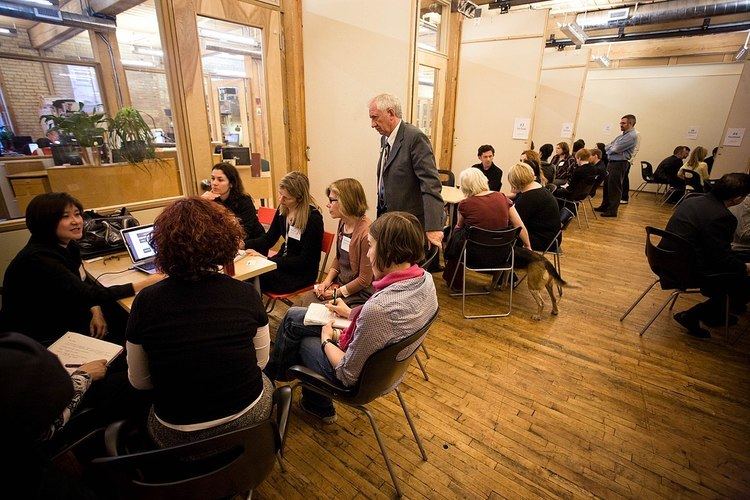 | ||
Speed geeking is a participation process used to quickly view a number of presentations within a fixed period of time. Speed geeking gets its name from speed dating, since they both employ similar techniques.
Contents
Method
A large room is selected as the speed geeking venue. All the presenters are arranged in a large circle along the edge of the room. The remaining members of the audience stand at the center of the room. Ideally there are about 6-7 audience members for each presenter. One person acts as the facilitator.
The facilitator rings a bell to start proceedings. Once proceedings start, the audience splits up into groups and each group goes to one of the presenters. Presenters have a short duration, usually 5 minutes, to give their presentation and answer questions. At the end of the five minutes, the facilitator rings a bell. At this point, each group moves over to the presenter to their right and the timer starts once more. The session ends when every group has attended all the presentations.
Advantages
Speed geeking is a great way to quickly view a number of presentations and demos in a short while. For example, one hour is enough time to view 12 presenters if you spend 5 minutes at each presentation. The 5 minute limit also keeps presentations short and interesting. Also the small table format gives participants an opportunity to connect on a more personal level.
Disadvantages
Each presenter has to give their presentation multiple times.
Related Processes
A Lightning Talk is another method of quickly going through a number of presentations in a short period of time.
PechaKucha - presentations (20 images shown for 20 seconds each) are sequential.
Ignite (event) - presentations (20 slides shows for 15 seconds each) are on a given topic.
